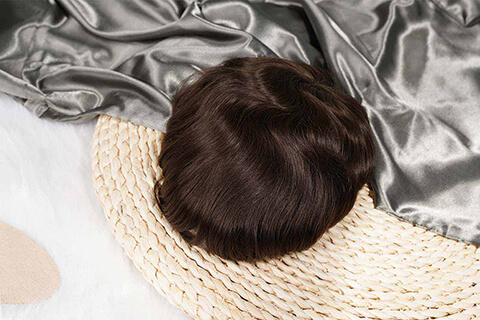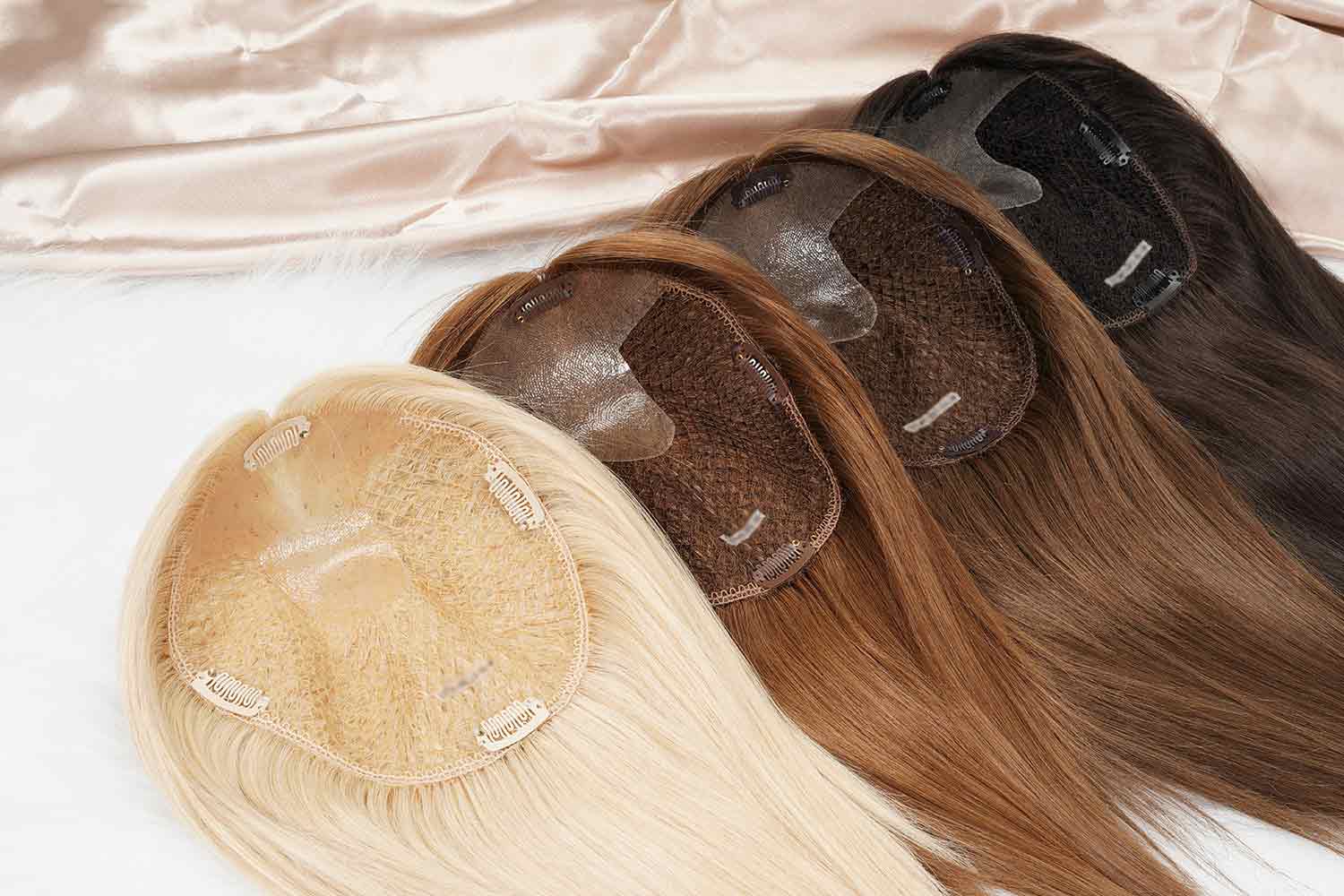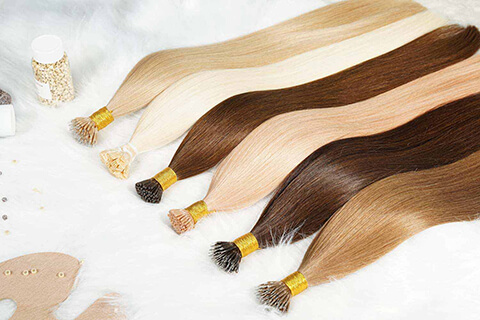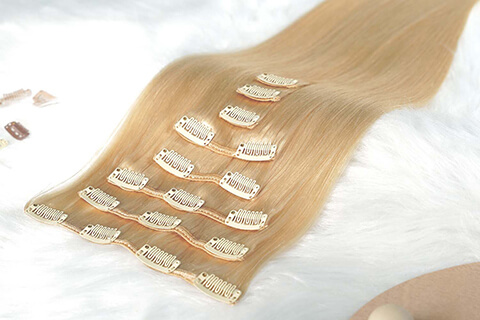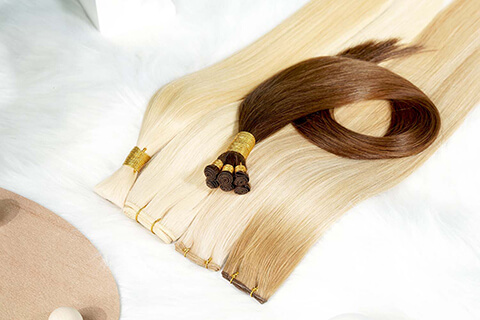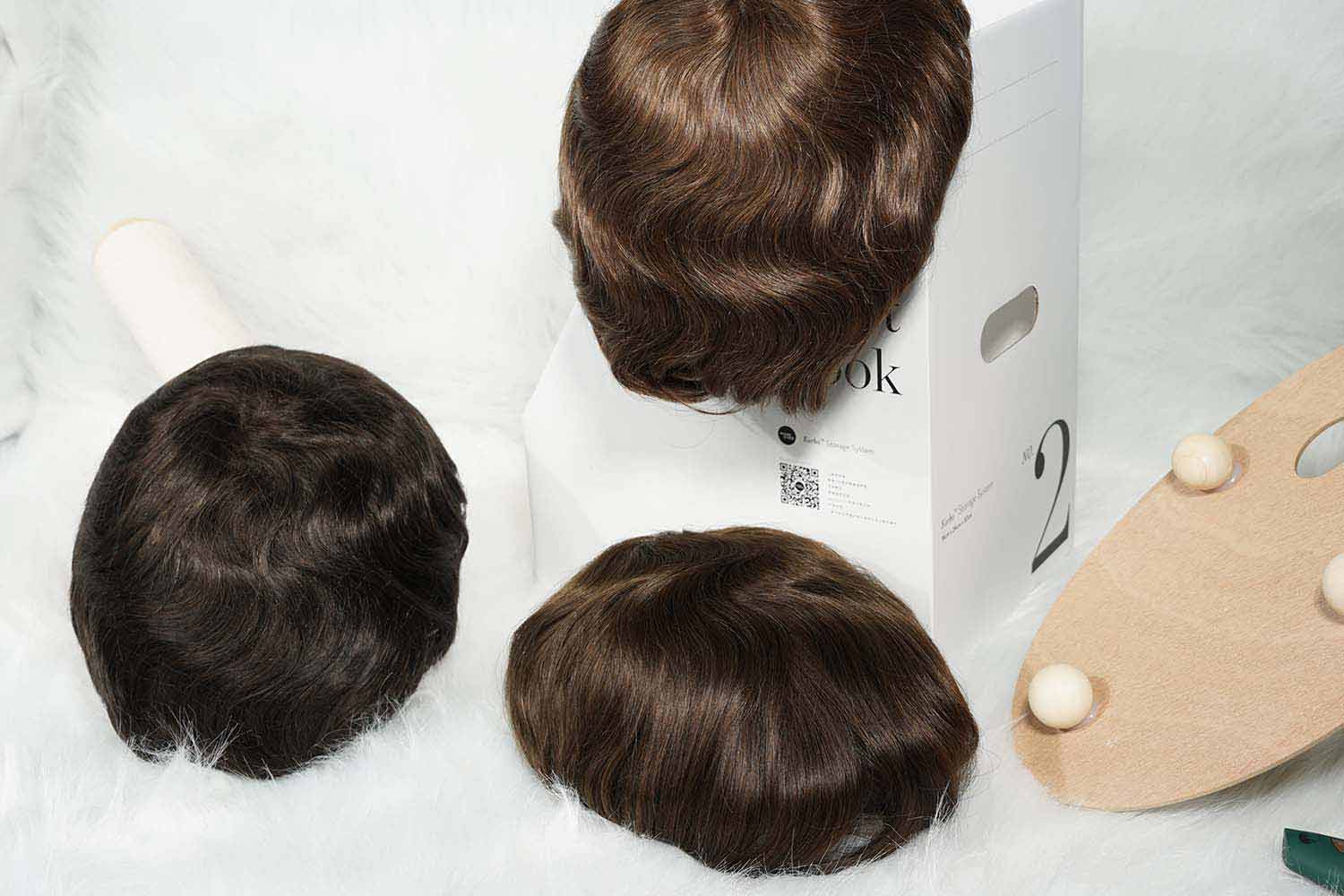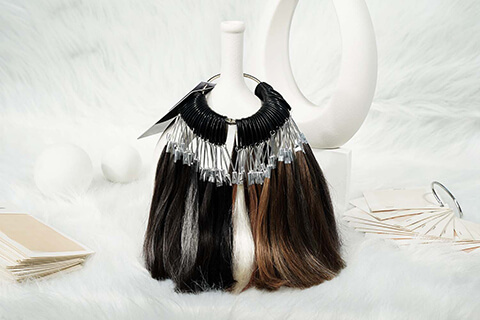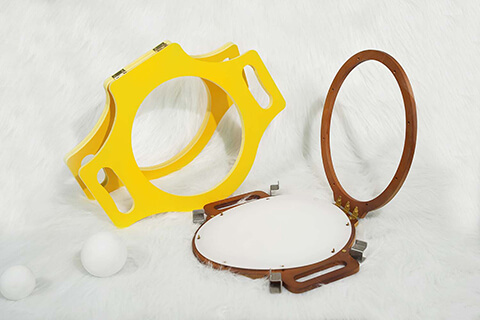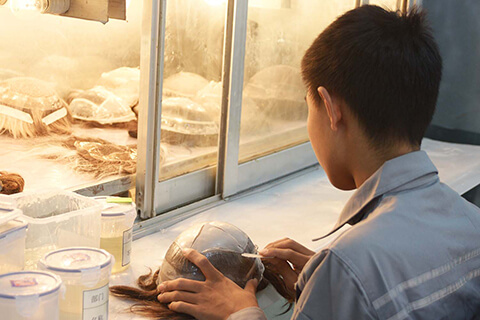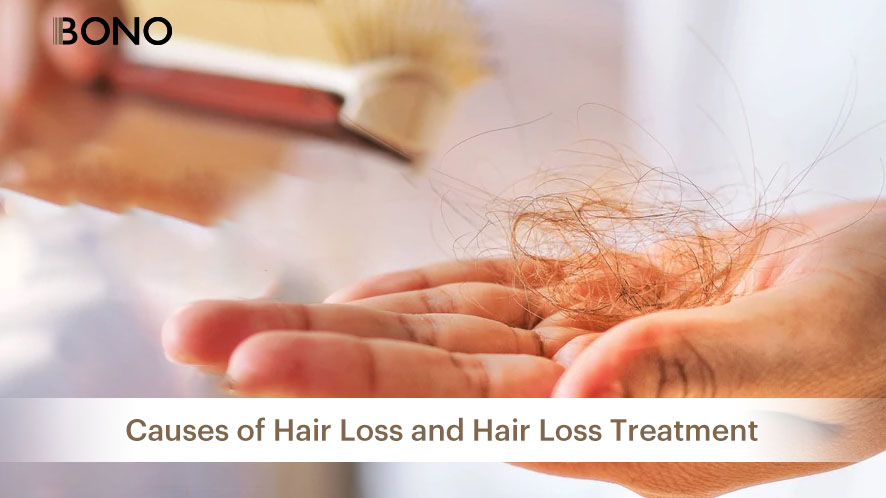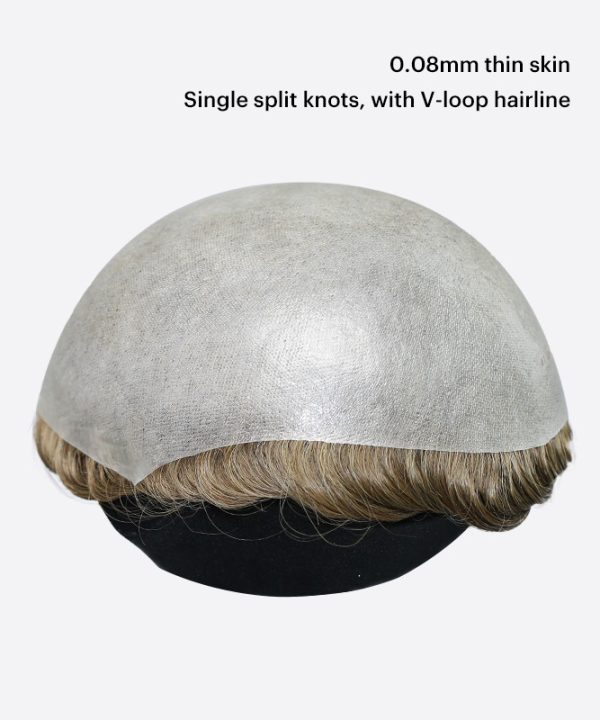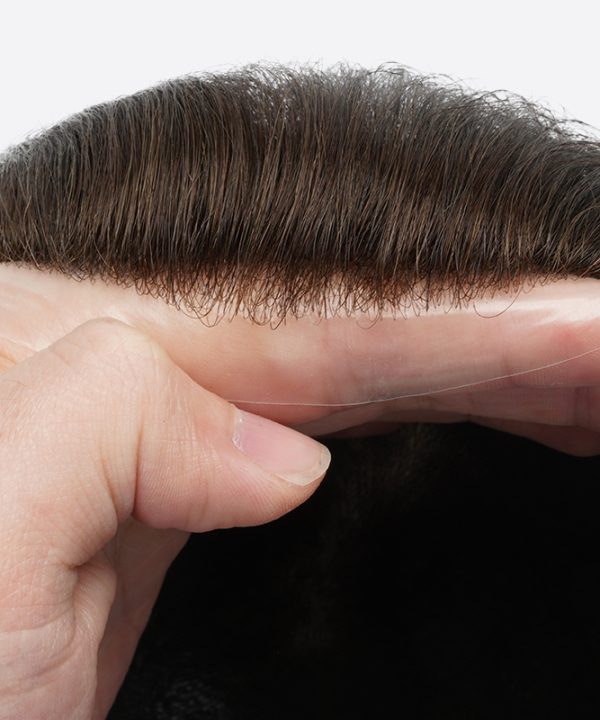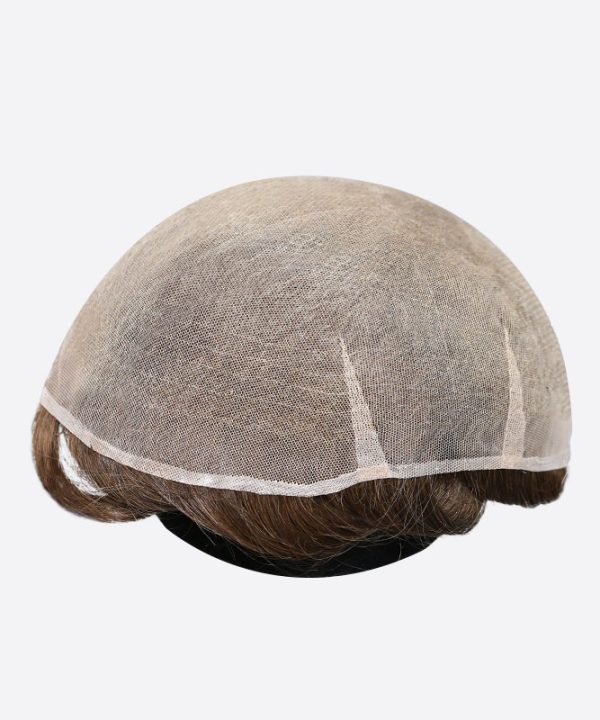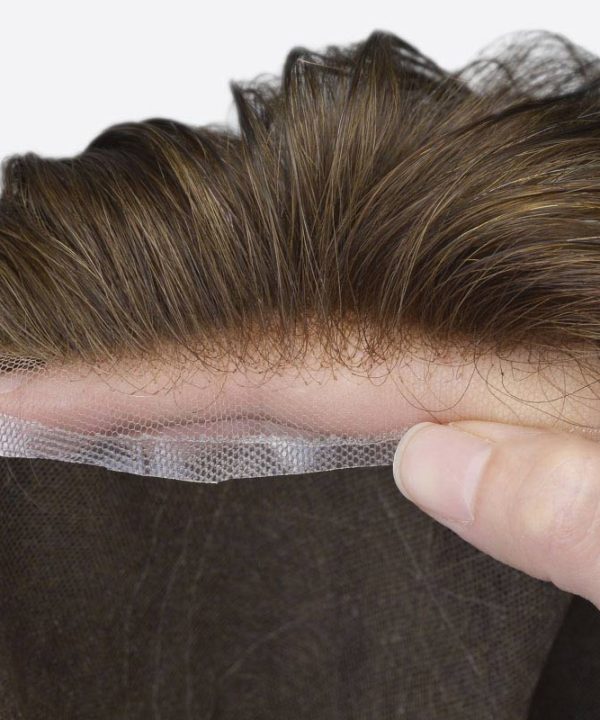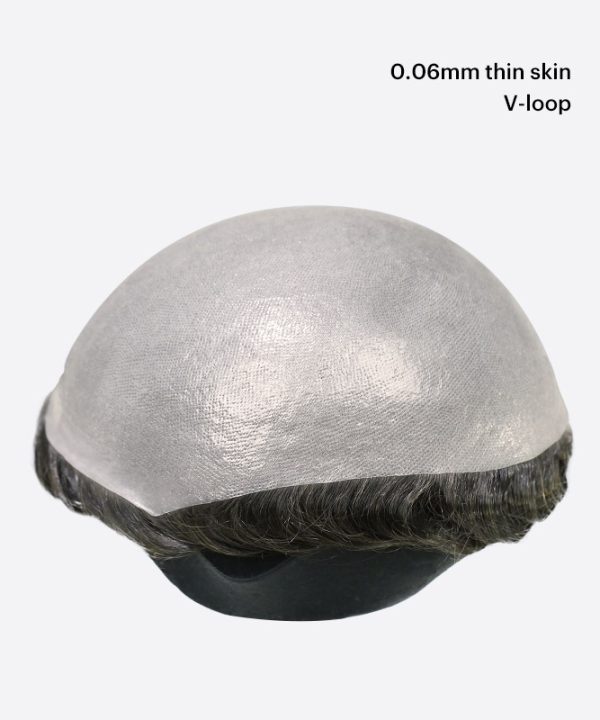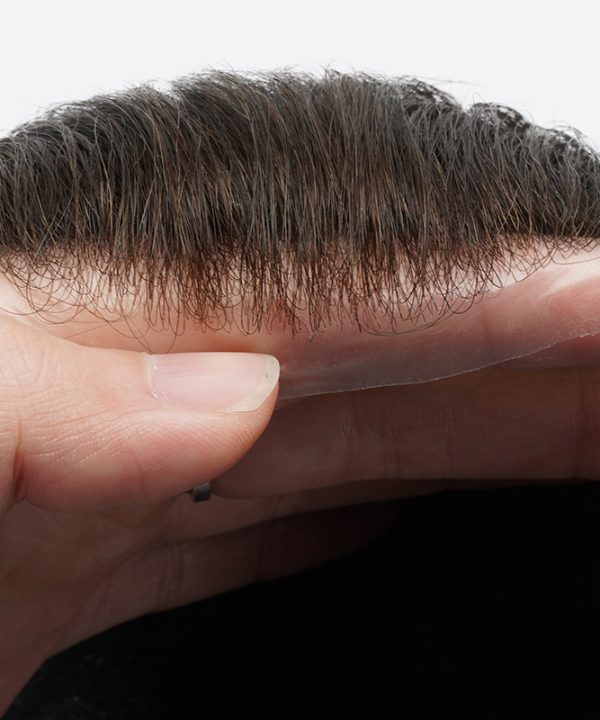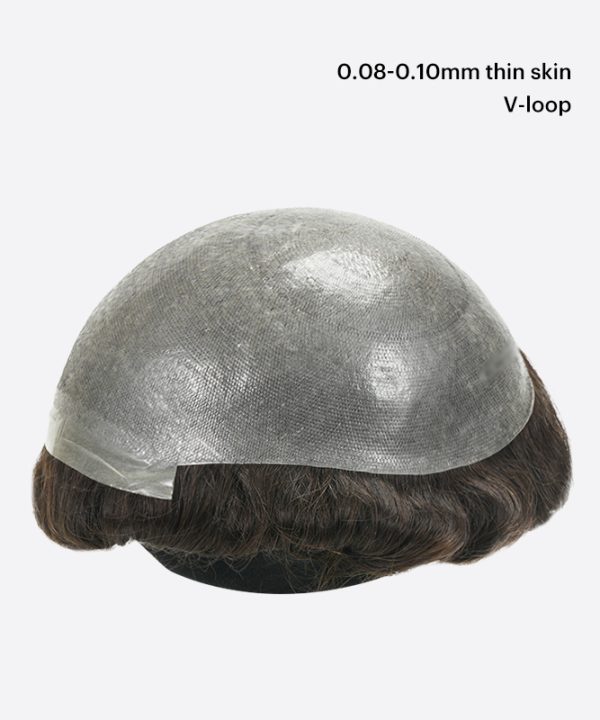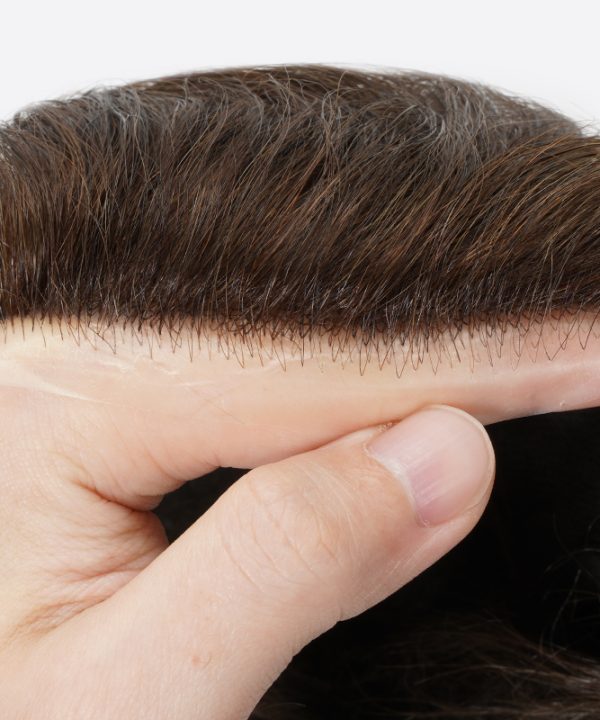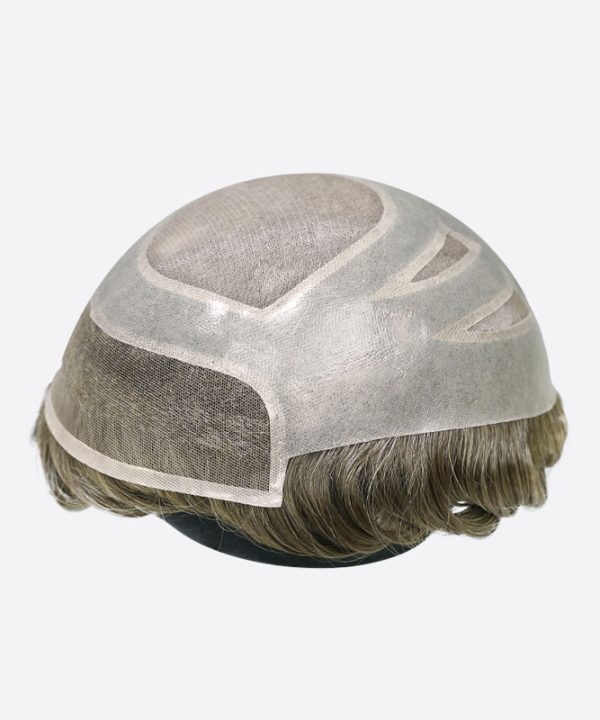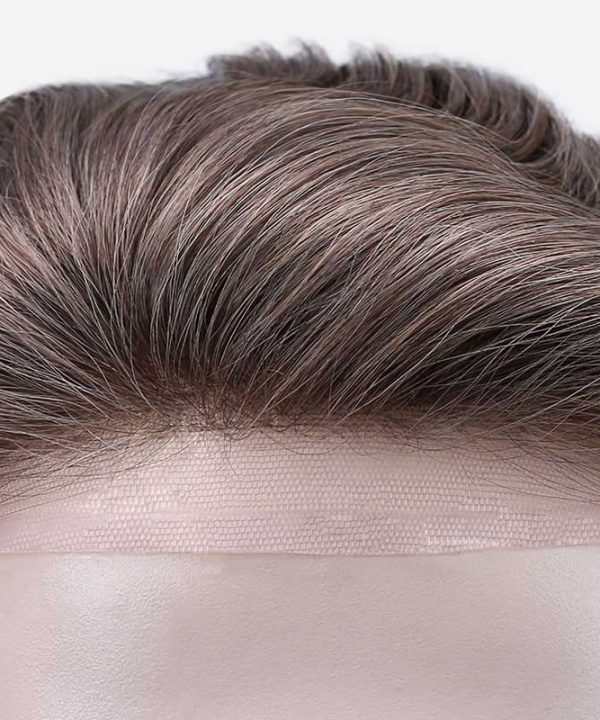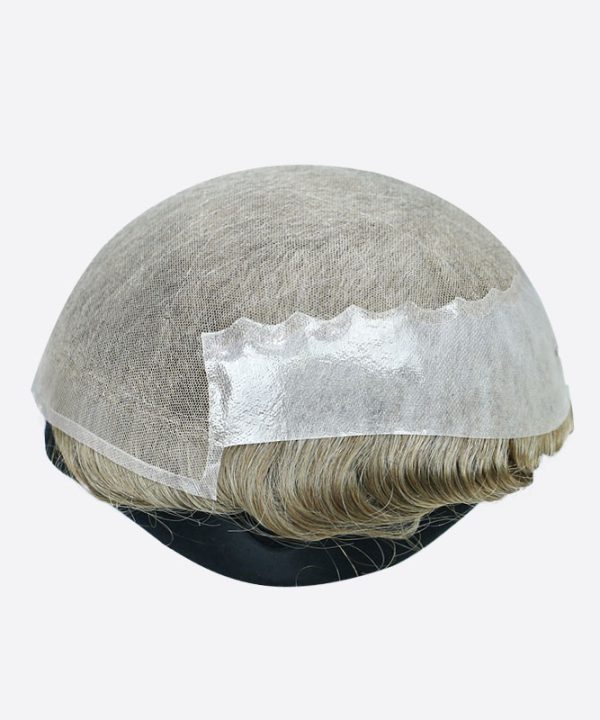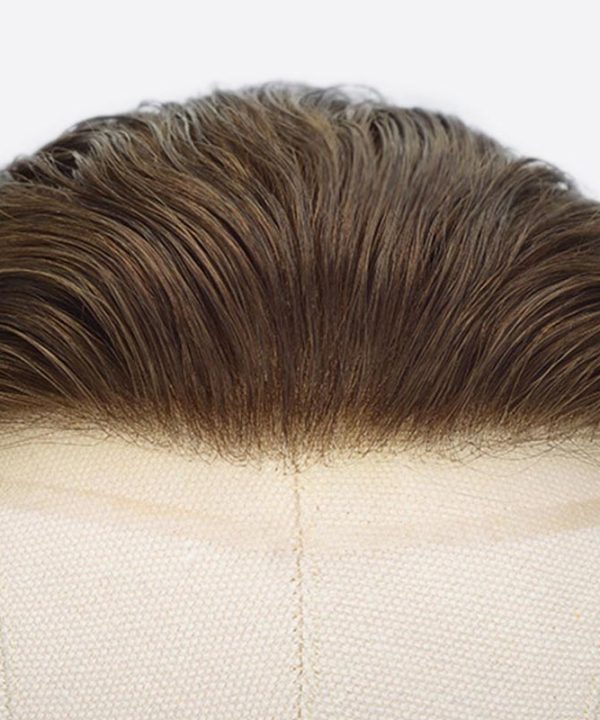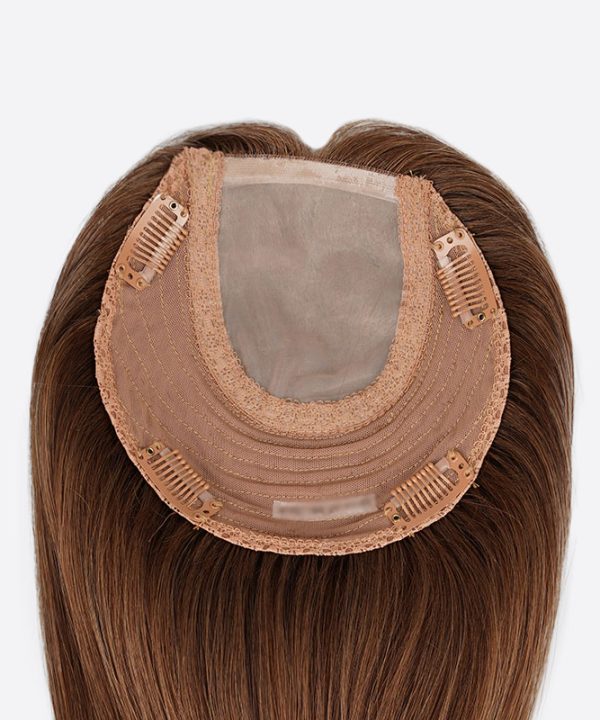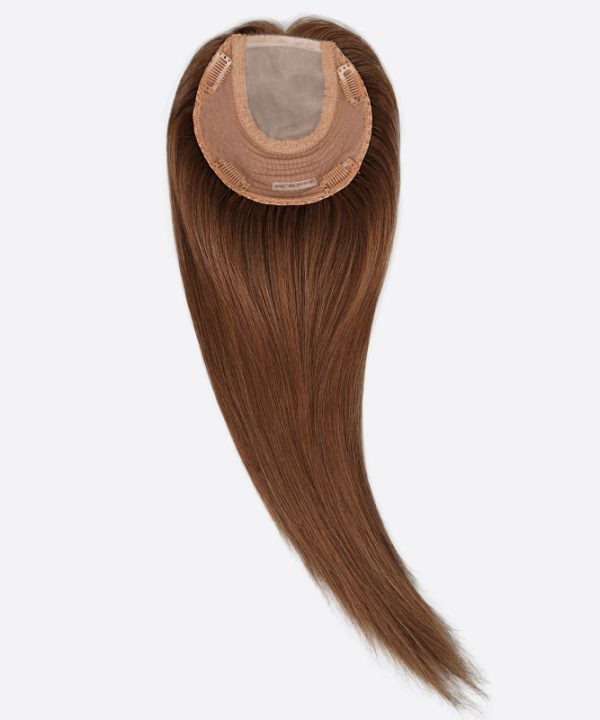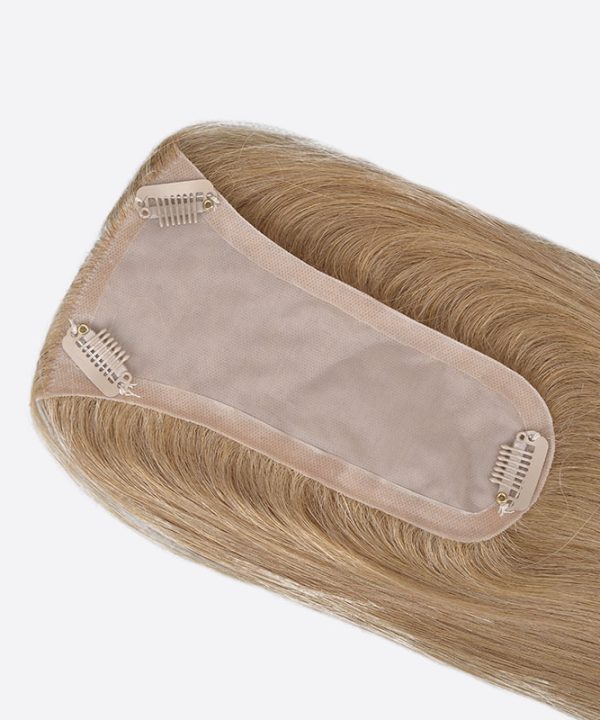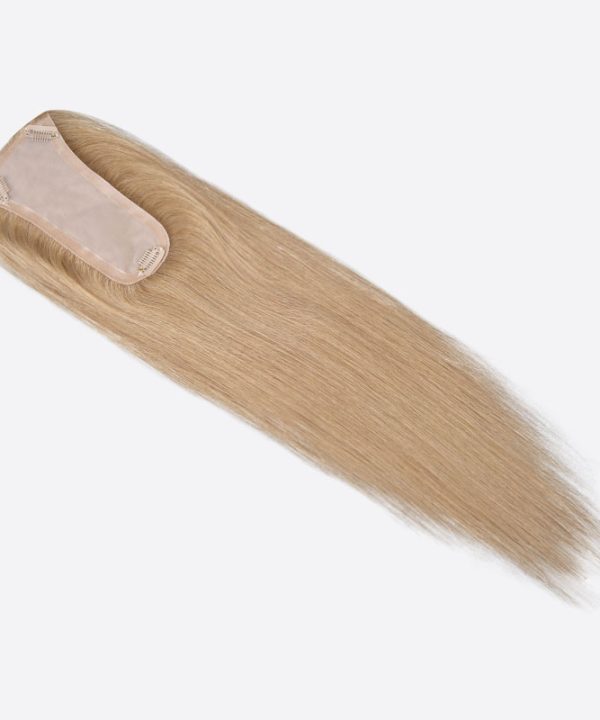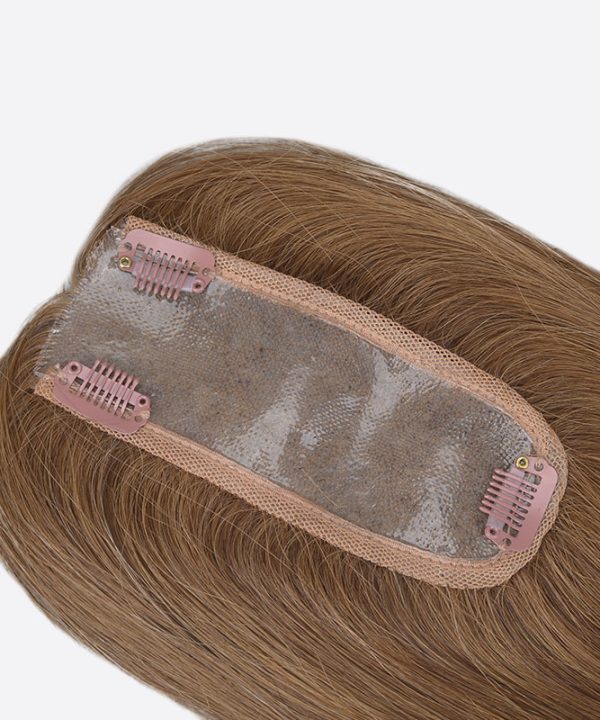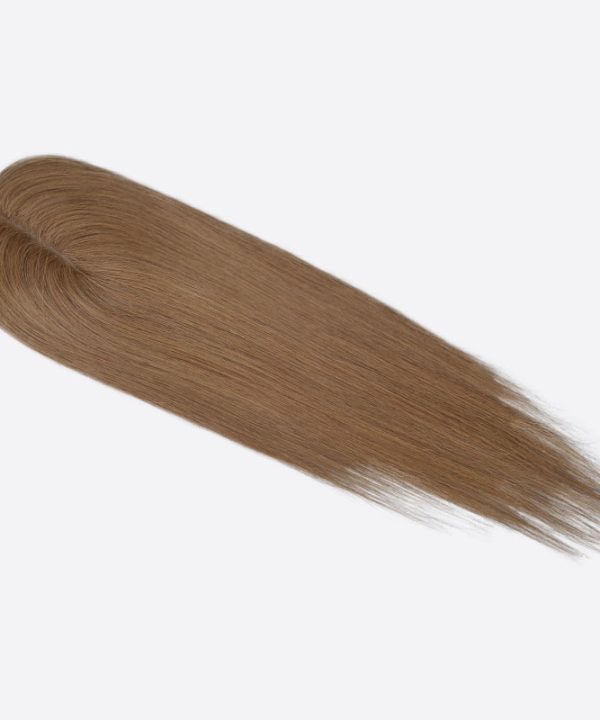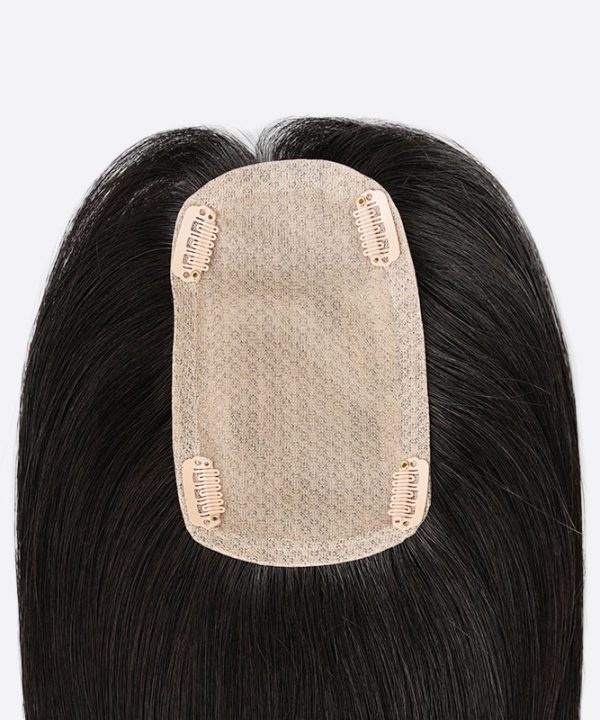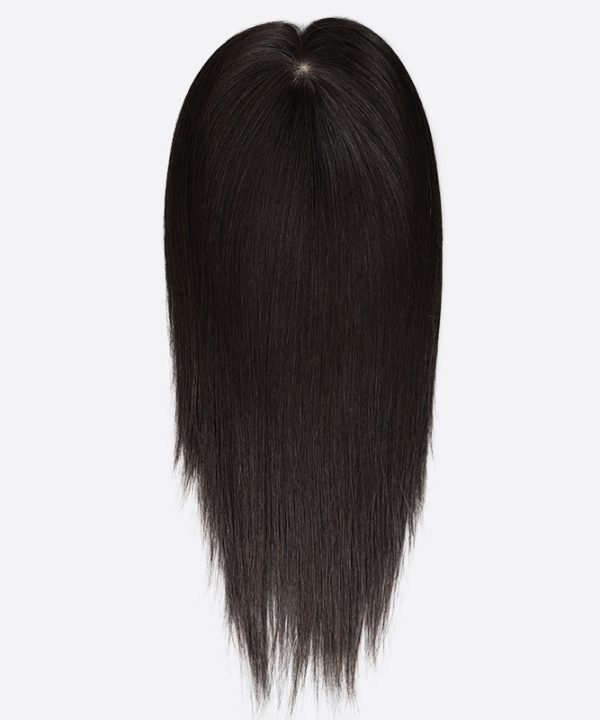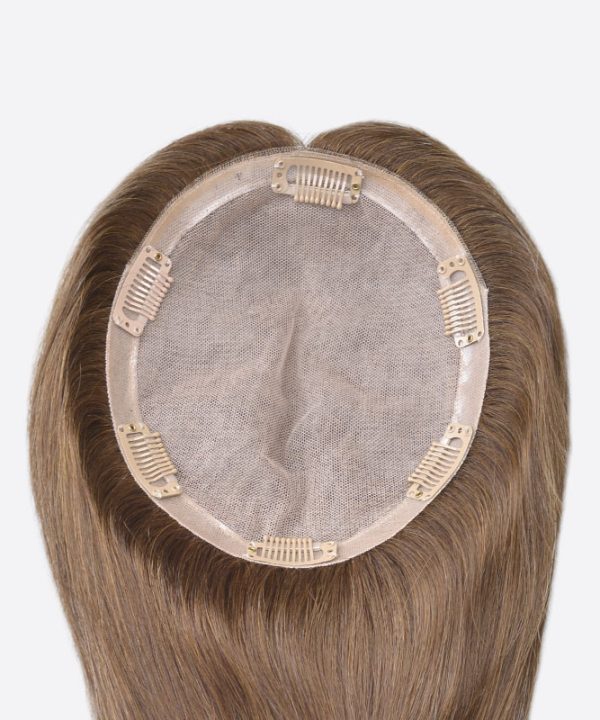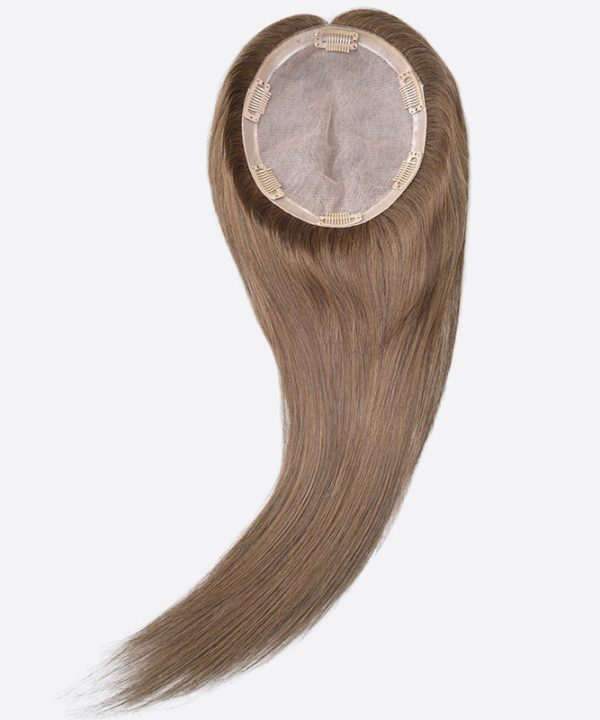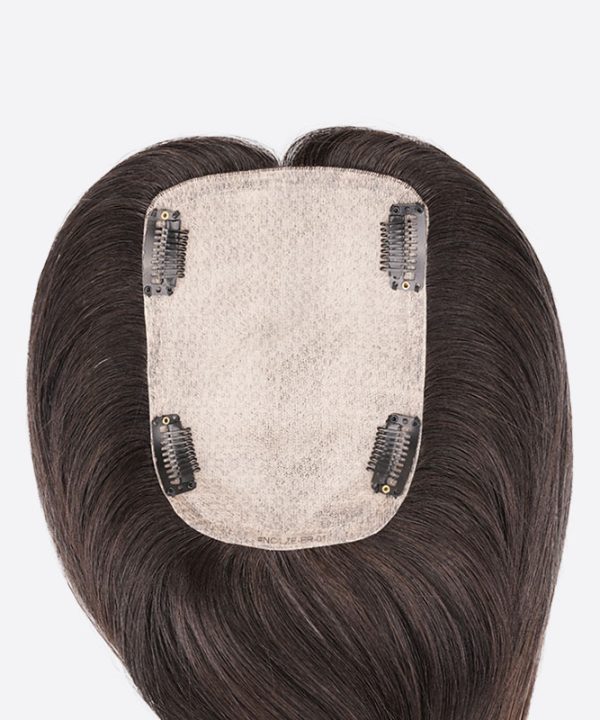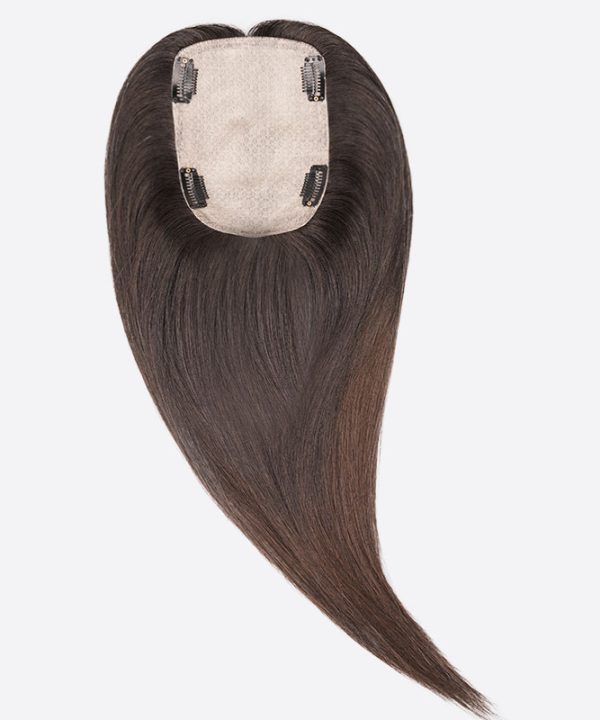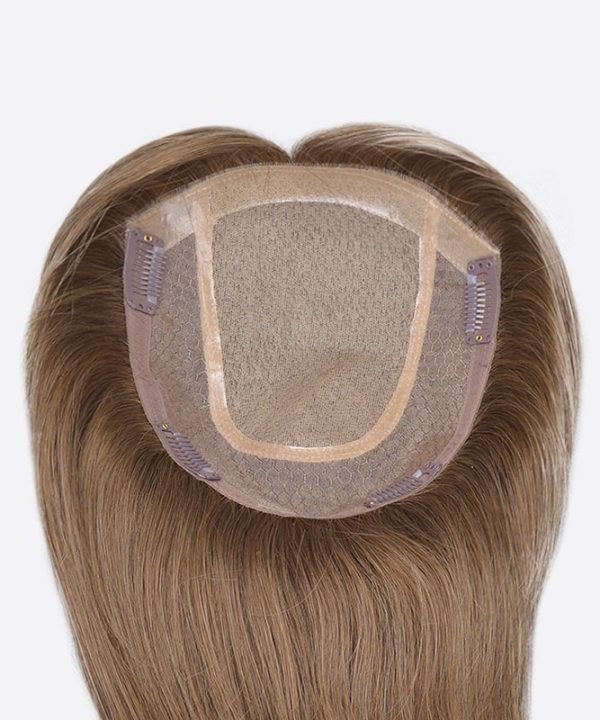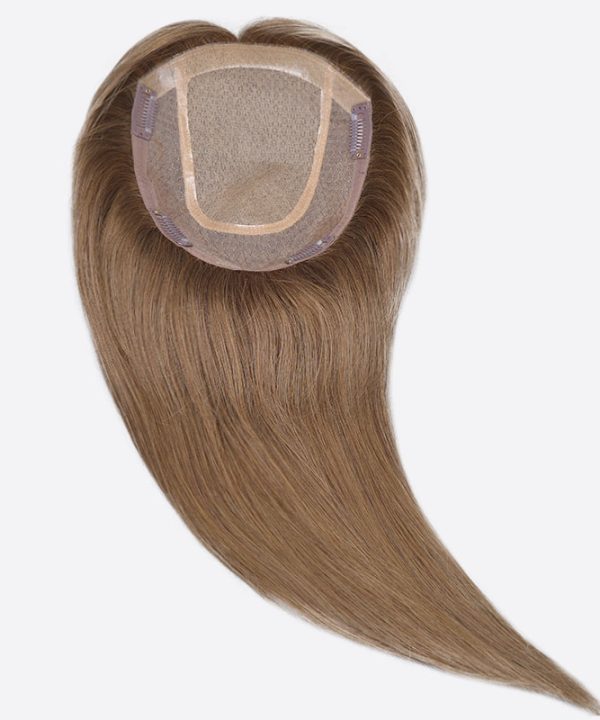No products in the cart.
Hair Loss and Hair Thinning
Causes Of Hair Loss And Hair Loss Treatment
Introduction
There is no need to say that hair loss is a common problem in both men and women. But people want to know authentic statistics to notice how severe and common it is now. So, let’s get to know them.
According to the American Hair Loss Association, 25% of men before 21 start losing hair. At the age of 35, 66% of men have experienced some degree of hair loss. When men reach the age of 50, approximately 85% of them experience a severe degree of hair loss or significant hair thinning.
Men’s hair loss is significant, but women experience more hair loss than men per day. According to PubMed, 40% of women lose extra hair because of the way they style it.
According to the International Society of Hair Restoration Surgery, 40% of women at the age of 40 suffer from hair loss. When women reach the age of 60, 80% of them have noticeable hair loss.
As hair loss becomes so common, one must know hair loss treatments, causes for it, and how non-surgical hair replacement can work. So, in this blog, we are going to discuss all this.
What Is Called Hair Loss?
Hair loss is also referred to as alopecia. It happens because of a disorder that disturbs the body’s cycle of hair production. Hair loss largely affects the human head more than the whole body. When due to different causes, the hair production cycle gets interrupted or hair follicles get damaged, then the hair fall increases and a person starts to lose hair more quickly than it grows, then it is called hair loss.
The hair production cycle consists of different phases in which hair grows, rests, falls out, and regenerates. Understanding the hair growth cycle helps you understand hair-loss-related things and types of hair loss quickly.
Phases Of Hair Production:
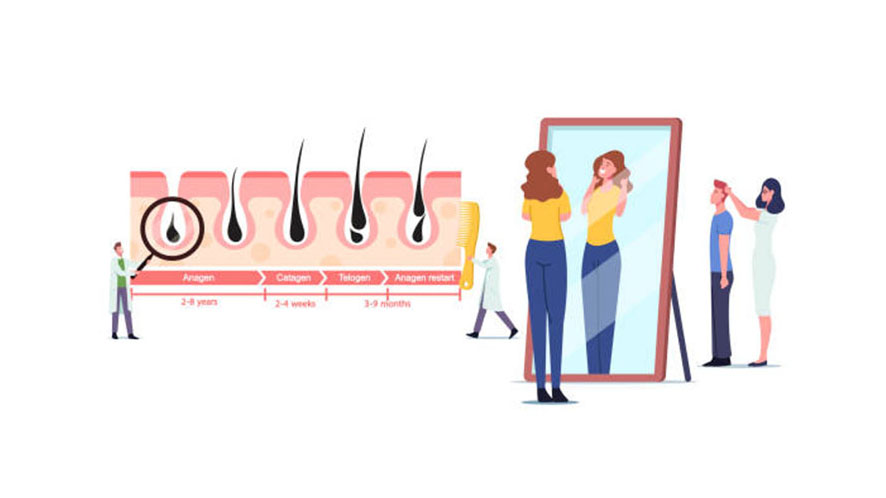
-
Anagen:
Anagen is the first and active phase of hair. In this hair bulb or root is rapidly dividing creating new hair. It is the longest phase in the hair growth cycle. Hair remains in this phase for three to five years. People with extremely long hair have this phase for seven years. Moreover, hair grows one centimeter in one month. This active phase normally grows 18 to 30 inches of long hair on the human scalp. For extra knowledge, hair other than the scalp has a short anagen phase of 30 to 45 days. Therefore, hair on other body parts, i.e., arms and legs, is shorter.
-
Catagen:
Catagen is a transactional phase and when it starts, anagen phase ends. About 3 to 5 percent of the hair on a human hair is in the catagen phase at any time. This phase lasts from 2 to 3 weeks. In the catagen phase, hair follicles shrink, and hair growth slows. Hair detaches from the bottom of the hair follicle yet remains in its place.
-
Telogen:
This is the resting phase and the last phase of the hair growth cycle. The telogen phase usually lasts around 3 months or 100 days. Approximately 10 to 15% percent of the hair on the human scalp is at this resting phase at any time.
In this phase, hair stops growing longer and can fall but usually does not fall out. But also, it is the phase where the hair follicle starts producing new hair in the place of hair that leaves its place in the catagen phase.
Some scientists say that hair only rests in the telogen phase and falls off from the head in the exogen phase.
-
Exogen:
Exogen is the shedding phase where if the hair in the telogen phase does not fall in someone’s head, it falls off from the head in this phase. This phase lasts from 2 to 5 months where hair falls off and new ones keep growing in follicles.
Due to this phase, normal hair shedding occurs (50 to 100 hair strands per day), which is helped by washing, brushing.
Types Of Hair Loss:
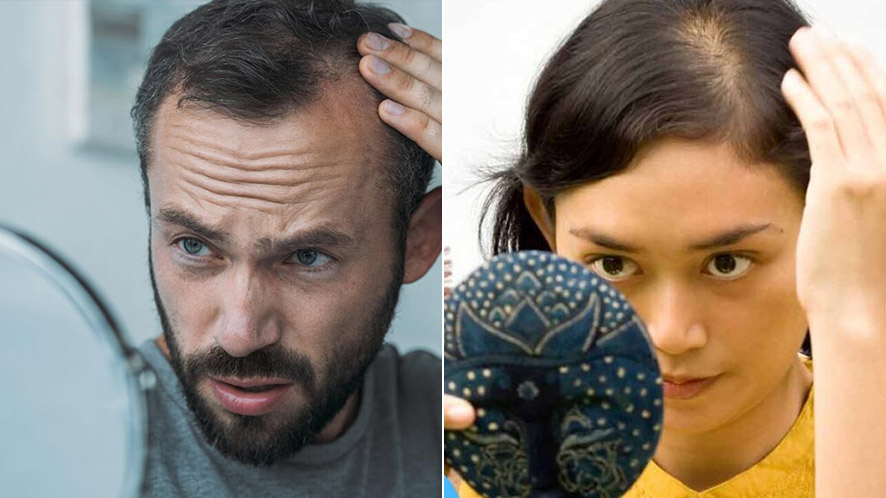
Understanding the most common types of hair loss helps you understand the causes of hair loss and treatment of hair loss.
-
Androgenetic Alopecia:
Androgenetic alopecia is the most common type of hair loss, which is usually known as pattern baldness in males and females. This type of hair loss is hereditary, but one can have hair loss treatment for it via surgical ways.
-
Male Pattern Hair Loss:
In men, MPHL (Male Pattern Hair Loss) can occur any time after puberty. This hair loss developed over time can make a person lose hair in decades or years. Traditionally, male pattern baldness leaves hair at the lower back of the head or completely bald. Male pattern baldness starts above the temples and continues in the top and the perimeter of the head.
-
Female Pattern Hair Loss:
In females, FPHL (Female Pattern Hair Loss) does not affect in a specific area or specific manner. It starts thinning hair all over the head. It means FPHL does cause a receding hairline. However, it can cause a woman to lose hair in a dramatic or abrupt way and rarely cause baldness. Women experience female pattern hair loss as they age. However, female pattern hair loss can start any time after puberty.
-
Telogen Effluvium:
This type of hair loss occurs when a large number of follicles on the scalp enter the telogen phase of hair growth (resting phase) and the next hair growth phase does not begin. This causes hair to fall out all over the head without new hair growth. In telogen effluvium, hair thinning starts at temples and crowns. If telogen effluvium hair loss lasts more than six months, doctors suggest hair loss treatment, or you can opt for non-surgical hair replacement.
-
Anagen Effluvium:
Anagen effluvium happens as a side effect of a medical treatment that shut down hair follicles production in the scalp. When the medical treatment ends, the hair will grow back. For speedy hair growth, one can try hair loss treatments.
Main Causes of Hair Loss
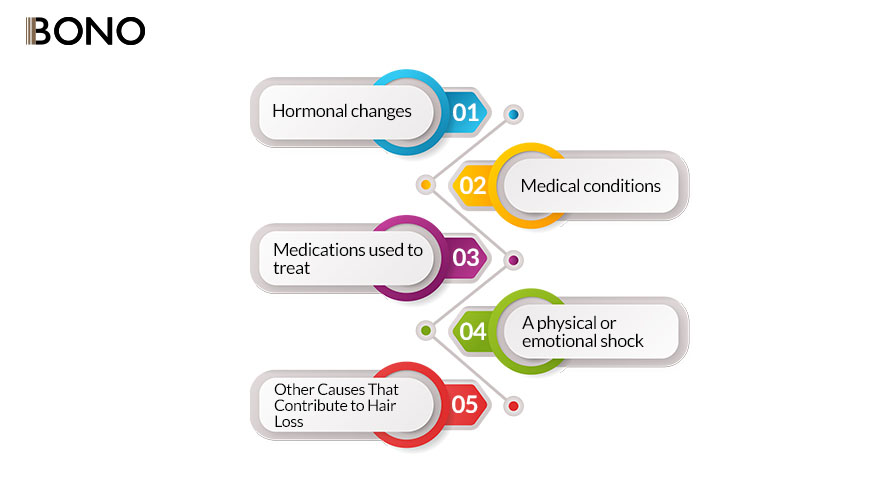
The most common cause of hair loss is male or female pattern baldness/hair loss. If a person has a family history of losing hair at a certain age, he or she will probably lose hair at the same age. However, when reaching the age of puberty certain types of a hormone can also trigger hair loss. There are also various causes of hair loss. Let’s look at them.
Hormonal changes:

-
Pregnancy:
As you read above, telogen is the resting phase of hair growth. At any time, 10% of the hair on the scalp is in the telogen phase and 90% of the hair is growing. If telogen effluvium occurs it causes a lot of hair shedding without new hair growth. It happens in one to five months following pregnancy. It is not uncommon, usually affects 40 to 50% of pregnant women and is temporary.
-
Childbirth:
Childbirth or after delivery hair loss occurs after three months. When hormones return to normal, the hair growth cycle becomes regular. The normal hair loss that was delayed during pregnancy may fall out all at once. If a woman’s hair does not start losing hair during pregnancy, their hair enters the telogen phase after childbirth. Up to 60% of women’s heads may enter the telogen (resting) phase. After 3 to 4 weeks of childbirth, hair loss peaks when hair follicles rejuvenate. This type of hair loss is temporary and gets back to normal within 6 to 12 months.
-
Discontinuing The Use of Birth Control Pills:
Immediately after stopping birth control pills, it is common that women’s hair falls at once. It happens because of telogen effluvium, hormonal stress of coming off the pill. When hormones return back to normal it causes massive hair shedding. This is temporary and hair enters the growing phase sooner.
-
Menopause:
Researchers inform that menopause occurs due to hormonal imbalance. This situation causes overall hair thinning especially at the sides, top, and front of the head. Moreover, washing and brushing cause hair to fall in clumps.
Medical conditions:
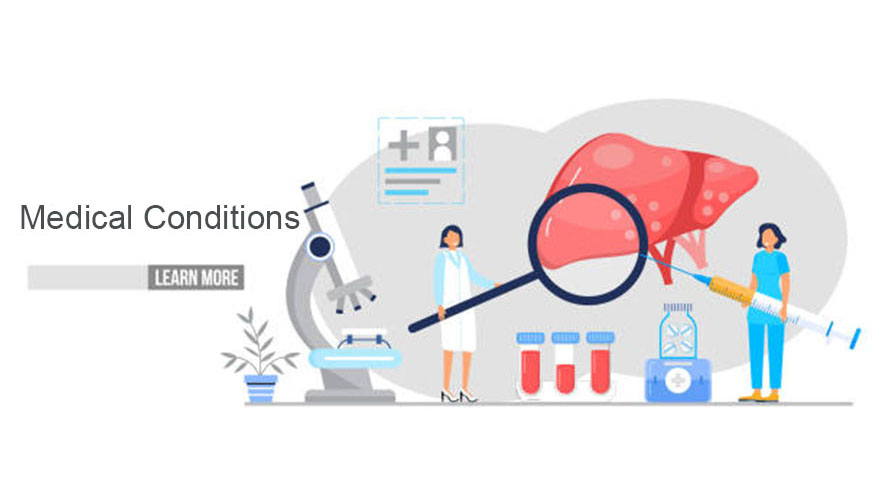
-
Thyroid Issue:
If underactive thyroid (hypothyroidism) or overactive thyroid (hyperthyroidism) become severe or prolonged, these cause hair loss. Rather than affecting the discrete area of the body, its major loss involves the entire scalp. After the successful treatment, hair can grow back in several months and may result in incomplete hair growth.
-
Alopecia Areata:
Alopecia areata happens because of an autoimmune disorder where the body starts attacking its healthy tissues including hair follicles. This situation causes hair to fall out and prevents new hair growth. It begins suddenly without any warming mostly in children and young men and women. This can cause complete baldness or hair growth back in years. At this time hair loss treatments or non-surgical hair replacement can help.
-
Diabetes:
There are 2 types of diabetes: type 1 and type 2. Type 1 diabetes happens because of a genetic disorder. On the other hand, type 2 diabetes happens because of poor eating habits and develops over time. Both conditions lead to hair loss because of the stress of having this disease. Because type 2 diabetes happens because of hormonal imbalance, it certainly causes hair loss. However, hair loss due to diabetes can be improved.
-
Iron Deficiency:
If a person starts losing hair in clumps or more than usual, then it may be related to iron deficiency. In iron deficiency, hair and skin get less oxygen from the blood, making hair brittle and dry. Severe iron deficiency causes hair loss too. Hair loss with iron deficiency looks the same as traditional male and female pattern baldness and hair loss. Restoring iron deficiency as a hair loss treatment can cause hair to grow.
Medications used to treat:
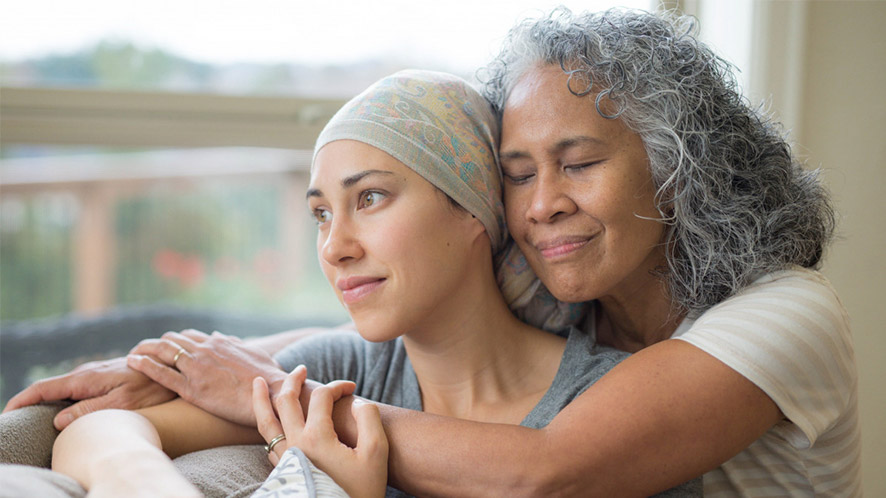
-
Cancer:
For the treatment of cancer, chemotherapy is done. Chemotherapy attacks the growing cancer cells to treat cancer. Unfortunately, it also attacks the other growing cells in the body which includes hair follicles. Hair follicles are the most active growing cells in the hair roots which grow hair. That’s why cancer treatment causes hair loss on the head and all over the body.
-
High Blood Pressure:
Hair loss happens because of the increased risk of high blood pressure and treatment for it, both. To treat this situation, a class of medications, ACE inhibitors, mainly captopril and lisinopril are used which are famous for hair loss.
-
Arthritis:
Rheumatoid arthritis (RA) is an inflammatory and autoimmune disease that attacks the joints of the body. It needs treatment to stop the growth of immune cells that trigger chronic inflammation. Stopping the growth of cells with this medication also stops the growth of cells that support hair follicles. As a result, hair will loosen up from follicles and fall. However, it happens to only 1 to 3% of people.
-
Depression:
Same as high blood pressure, not only depression but treatment for it also causes hair loss. Antidepressants cause a type of hair loss called telogen effluvium. Its side effects on hair loss can be wide but often reversible.
-
Heart Problems:
In heart problems, blood thinners or anticoagulants are used to prevent blood clots and certain health problems. These include Warfarin, Heparin, etc. Especially in Coronary Artery Disease (CAD), a heart problem, patients are more susceptible to hair loss. Usually, they have receded front hairline, total or subtotal hair loss, or a critical bald area.
A physical or emotional shock

-
A Death in The Family:
Bereavement (loss of a loved one) badly affects the immune system and causes high levels of stress. Furthermore, high levels of stress are linked to Alopecia Areata (AA). So, if the grief becomes severe and prolongs it triggers AA. Therefore, patchy hair or bald spots occur on the head or on all over the body.
-
Extreme Weight Loss:
Extreme weight loss due to a disease or its treatment certainly causes hair loss. But if a healthy one follows a specific diet and eating routine (especially a low-calorie diet) for extreme weight loss, protein malnutrition occurs. Because of protein malnutrition occurring, the body does not get enough nutrition resulting in hair loss.
-
A High Fever:
Because of high fever, more than usual hair enters the telogen phase (shedding phase). People usually notice more hair loss after 2 to 3 months of treatment of high fever.
Other Causes That Contribute to Hair Loss:

-
Trichotillomania:
Trichotillomania is a psychological disorder that is usually found in children. It is one’s overwhelming urge to pull out their own hair repeatedly. It causes subsequent hair loss. Hair on the scalp is most affected by this trichotillomania.
-
Excessive Styling:
A hairstyle or hair styling process that pulls hair from roots or puts tension at roots or scalp causes hair loss. Pigtails, cornrows, tight ponytails are one of the hairstyles that damage hair roots and cause hair loss. The hair loss that occurs because of excessive styling is called traction alopecia. Traction alopecia develops over time because of prolonged or repetitive tension on the scalp hair.
-
Unhealthy Diet:
If someone dramatically decreases their calorie intake, they are most suspected to have some of the most crucial nutrients, vitamins, proteins, fatty acids, and zinc deficiencies. When this eating habit continues over a prolonged time it causes telogen effluvium.
-
Chemical Hair Treatments:
Chemical hair treatments for men and women damage the hair and scalp more than we think. The scalp is the source of nutrients for hair to help them grow better and absorb well everything we apply to it. So, chemicals absorb well too, and deteriorate the quality of new hair growth. Continuous use of chemicals or having hair treatments can burn the scalp. Scalp burn due to chemicals causes the permanent loss of certain hair follicles. If scarring occurs it will lead to permanent hair loss.
-
Not Knowing the Right Way to Manage Hair:
One should know the hair care regimen according to their hair type. But there are some general hairstyles that everyone should save their hair from. Not being aware of it can damage hair and eventually hair loss starts. First of all, be gentle with your hair even when doing a healthy process to it. Use mild shampoo and conditioner. Let hair air-dry. Don’t rub your hair aggressively with a towel. Limit the use of heated styling tools to special occasions. Comb your hair with a wide-tooth comb or with a brush made of natural bristles.
Hair Loss Treatment
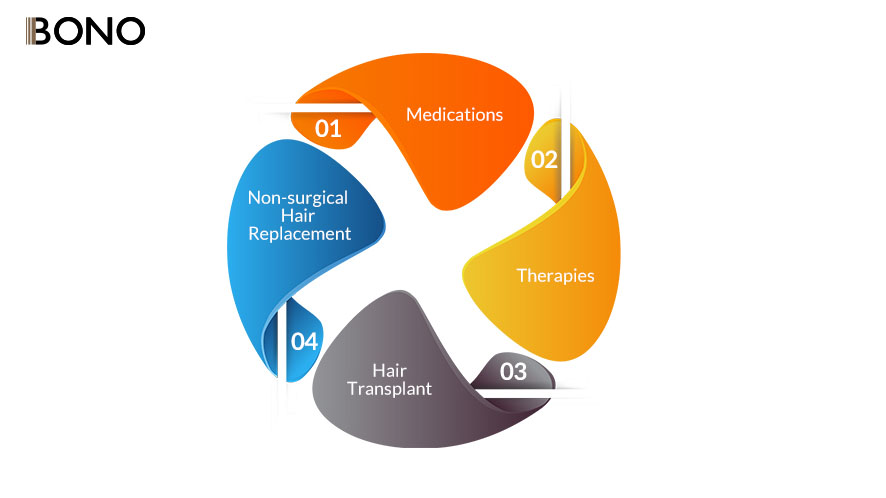
To stop different types of hair loss including male and female pattern baldness or hair loss, there are various hair loss treatments. It can be treated via medication, therapy, hair transplant, and non-surgical hair replacement. Let’s look at all of them and find out which is the best hair loss treatment for males and females.
1. Medications
-
Minoxidil:
Minoxidil was developed by scientists to treat high blood pressure. But later, it was seen that it is causing unwanted hair growth. It made drug companies think of using it as a hair loss treatment for males.
It works by shortening the telogen (resting) phase of the hair growth cycle and moving hair into the anagen (active) phase. In other words, it prolongs the hair growth cycle, which makes your hair denser, fuller, and longer. If minoxidil is used properly, it is safe and effective. However, this hair loss treatment is best for men who are under 40.
According to PMC, topical minoxidil is only approved by FDA (Food and Drug Administration) for androgenetic alopecia (pattern baldness or hair loss in males and females). However, minoxidil is also used as an off-label (approved medication prescribed for unapproved uses) product to treat other hair loss disorders like scarring alopecia, alopecia areata, and hair shaft disorders.
Topical minoxidil (also known as Rogaine) comes in liquid and foam form to spread on the scalp every day. Usually, it causes more hair loss initially and needs six months of application on the scalp to stop further hair loss and encourage new hair growth.
Moreover, there are several disadvantages of using minoxidil.
- Irritation on skin, itchy scalp, or redness
- Yellow or white scales on the scalp
- allergic contact dermatitis
- Excessive hair growth all over the body, including the face of females
If someone uses topical minoxidil, hair growth will start where medication encounters.
Furthermore, minoxidil is not suitable for breastfeeding and pregnant women.
-
Finasteride:
Finasteride is a medication used for the treatment of androgenetic alopecia (male pattern baldness). It is usually recommended to adult men.
Finasteride reduces the number of hormones named dihydrotestosterone (DHT) in the scalp. DHT makes hair follicles thinner which makes hair growth difficult. So, reducing DHT hormones promote hair growth and decrease hair loss.
Finasteride does not cause hair growth all over the body other than the scalp like minoxidil. Finasteride is available in oral and topical form. However, according to the Journal of Dermatological Treatment, topical finasteride formulation is less likely to have as severe side effects as its oral form.
Finasteride has many other severe side effects than depression. One should talk to the doctor before using it.
-
Prescription Spironolactone Pills:
The drug, Spironolactone, also known as Aldactone used to treat hair loss by treating hormones. According to the American Family Physician, not all researchers agree that Spironolactone works effectively to stop hair loss. Moreover, the US Food and Drug Administration (FDA) has not approved it as a treatment for androgenetic alopecia (male and female baldness/pattern hair loss). Therefore, one should talk about Spironolactone’s benefits and risks to the human body.
-
Corticosteroid Injections:
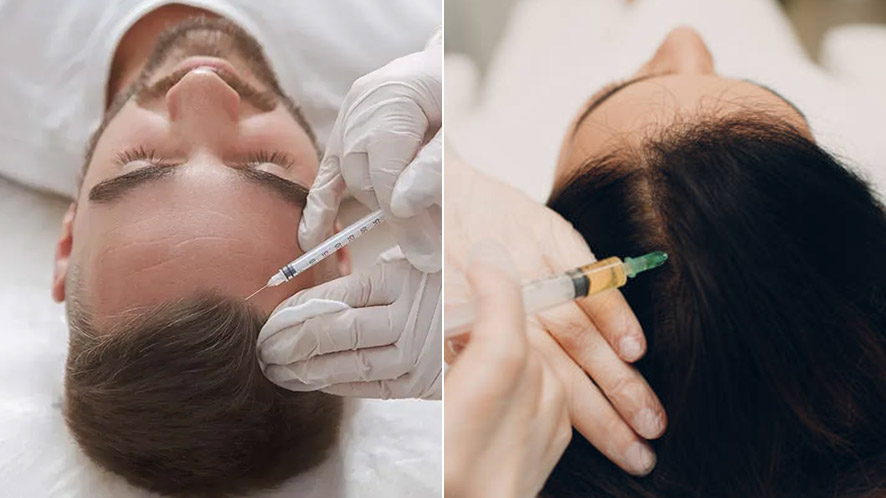
Corticosteroid injections help women with alopecia areata by injecting it on the affected area’s multiple sites. It can make hair grow as fast as in four weeks. However, the treatment is required to be repeated every four to six weeks. Moreover, it has side effects too which are skin atrophy and thinning of the scalp skin.
If someone uses topical corticosteroids, they will not be as effective and can also cause unpleasant side effects.
-
Topical Anthralin:
Topical anthralin is considered effective and safe between other treatments for alopecia areata in women. One can apply it at home, initially for five minutes then gradually prolong its duration to one hour. After its application, the patient should rinse the scalp with cold water and cleanse it with soap. One must need to apply it for 2 to 3 months to see hair sprout. However, topical anthralin has some side effects, e.g., severe irritation, allergic reactions, and soreness to the applied area.
-
Ketoconazole:
Ketoconazole with the strength of 2% is suggested to women with androgenetic alopecia. This is also known as Nizoral and comes in shampoo form. It works by reducing testosterone production to stop hair loss. Hair discoloration and abnormal hair texture are the biggest side effects of it.
2. Therapies
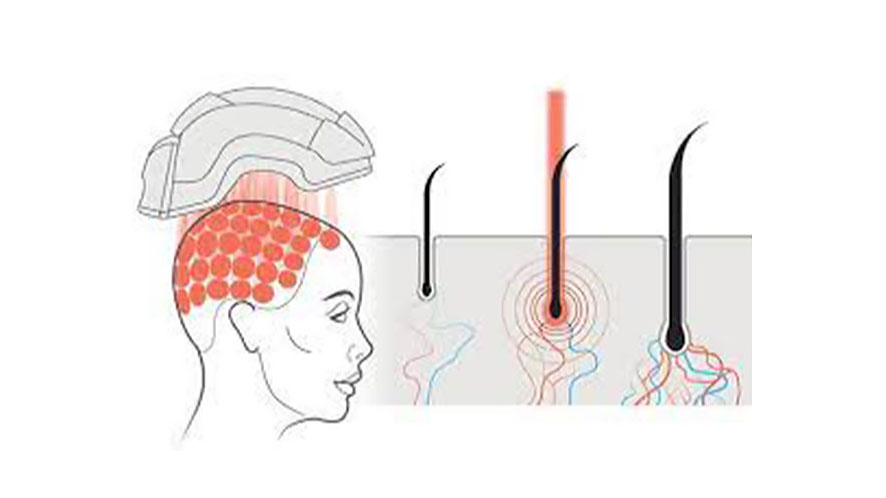
-
Platelet-rich Plasma (PRP) Therapy:
PRP therapy includes taking a person’s blood, processing it, and injecting it back to the scalp to accelerate the musculoskeletal healing to boost hair growth. There are several sessions with intervals. It is considered safe and cost-effective but not many studies support its effectiveness. Moreover, blood vessels or nerves injury, infection, scar tissue are some risks involved in PRP therapy as a treatment for hair loss for men and women pattern baldness.
-
Light And Laser Therapy:
Light and laser therapy helps people with pattern baldness and androgenetic alopecia. There are many types of lasers and light therapy that come in the form of handheld devices. Name of some famous light and laser therapies are here:
- Cold laser
- Soft laser
- Biostimulation
- Red light therapy
- Photobiomodulation
One has to use it for weeks or for a few months to see the results. Other than bleeding, pain, and swelling, ecchymosis, paresthesia, nerve damage, and implant failure are the big risks.
-
Topical Tretinoin:
For androgenetic alopecia hair loss treatment, topical tretinoin (Retin-A) with minoxidil is used as combination therapy. It is necessary to do this combination therapy under the guidance of your doctor. Otherwise, in some cases, it can cause hair loss.
People who use retinol treatments at home said that it has caused hair loss instead of hair growth.
3. Hair Transplant
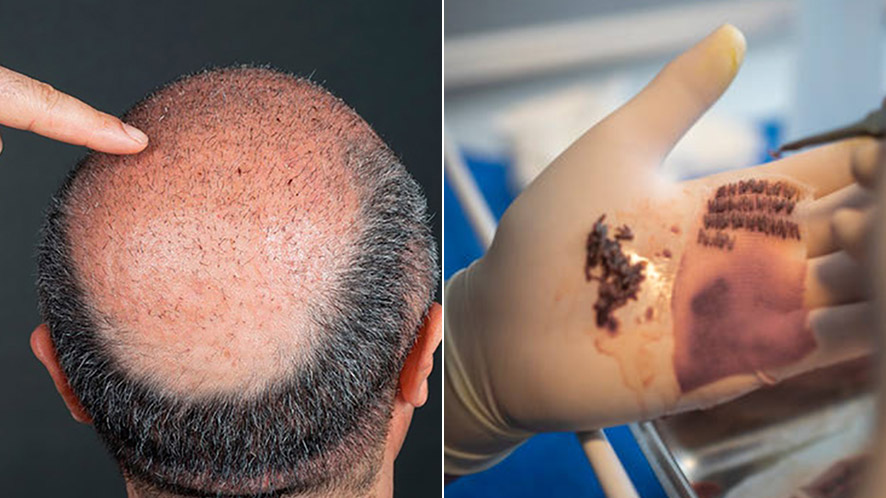
In a hair transplant, a dermatologist transfers hair to the bald area of the head. Usually, hair from the backside of the head is transferred to the top or front side of the head.
There is a certain perimeter to know if a person can benefit from a hair transplant or not. Let’s look at them.
- Women who have hair thinning all over the head
- Men with male pattern baldness
- Non-surgical Hair Replacement
- If someone has lost hair because of a burn or scalp injury
However, there are also some conditions for which a person cannot have a hair transplant. If a woman has widespread patchy hair loss all over the head, then a hair transplant is not suitable. Men or women who have no healthy hair site on the scalp donate follicles to the bald area. Moreover, people with keloid scars (thick, raised scars) can’t have hair transplants. If the hair loss happens as a result of medication, e.g., chemotherapy then the person is not ideal for a hair transplant.
Types of Hair Transplant:
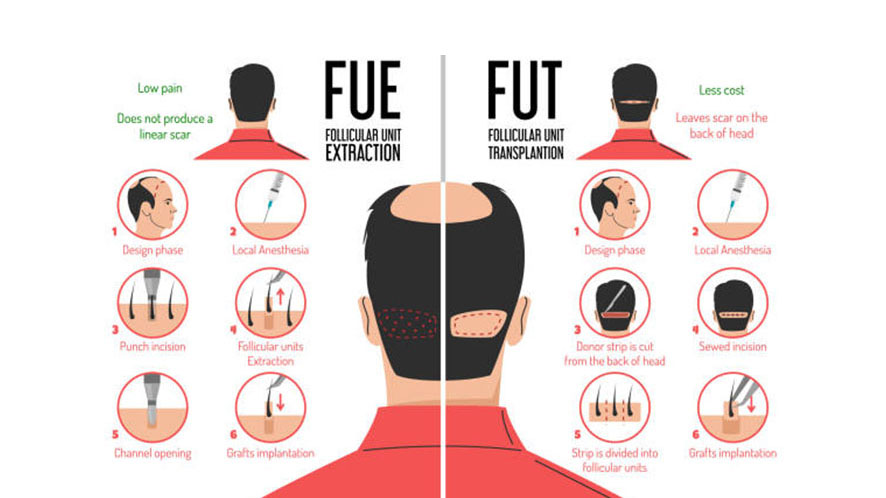
There are two types of hair transplants: FUT (Follicular Unit Transplant) and FUE (Follicular Unit Extraction). Among these methods, doctors suggest to the person what’s best for them.
In Follicular Unit Transplant, the surgeon cuts the piece of skin in the form of a strip, usually 6 to 10 inches long, from the backside of the scalp. That skin strip can be stretched from ear to ear. Then the area where the skin strip was taken is closed by stitching.
Afterward, the surgeon with their assistants cuts the skin strip into smaller pieces. Then those smaller pieces are divided into approximately 2,000 smaller fragments named grafts. These grafts are so tiny that one graft can even contain only one hair.
Next, the surgeon creates holes in the skin with a needle or blade to insert the grafts at the bald site. Then the surgeon takes the grafts one by one and inserts them in created holes. This process is called grafting. After this process, surgeons cover the scalp with gauze or bandages.
In Follicular Unit Extraction, the surgeon with their team shaves the back of the person’s head. Then he takes grafts from the patient’s scalp one by one. Creates holes in the scalp skin. Afterward, he inserts the grafts into created holes. When the surgeon removes each graft, there will be a tiny mark of skin removal. So, the surgeon will cover the site with gauze or bandages.
Is Hair Transplant Safe as Hair Loss Treatment?
Not only does a hair transplant require a lot of time and money, but a hair transplant also does not ensure that hair will grow back naturally with natural hair texture and thickness. The huge risks involved in hair transplants are many. Severe ones include infections, bleeding, losing sensation around the surgical sites, scalp pain, itching, and swelling, crust or pus drainage around the surgical site’s inflammation of hair follicles, continuing to lose hair if your hair is still balding, and the visible areas of hair that don’t match the surrounding hair or are noticeably thinner. So, a hair transplant is not safe to have hair back on the head.
4. Non-surgical Hair Replacement
Non-surgical hair replacement is the best alternative to surgical hair replacement that is guaranteed painless and offers accurate results. In this hair loss solution, hair is covered by a thick membrane having hair attached to its upper side, think of a hair system/toupee or topper. In other words, non-surgical hair replacement is another name for toupee or topper for thinning the crown. It is made with the highest technologies to give it a realistic appearance.
Both men and women don’t want to undergo surgery that takes months and years to grow hair that could be unnatural.
Like everything, non-surgical hair loss treatment has advantages and down points.
Advantages Of Non-Surgical Hair Replacement:
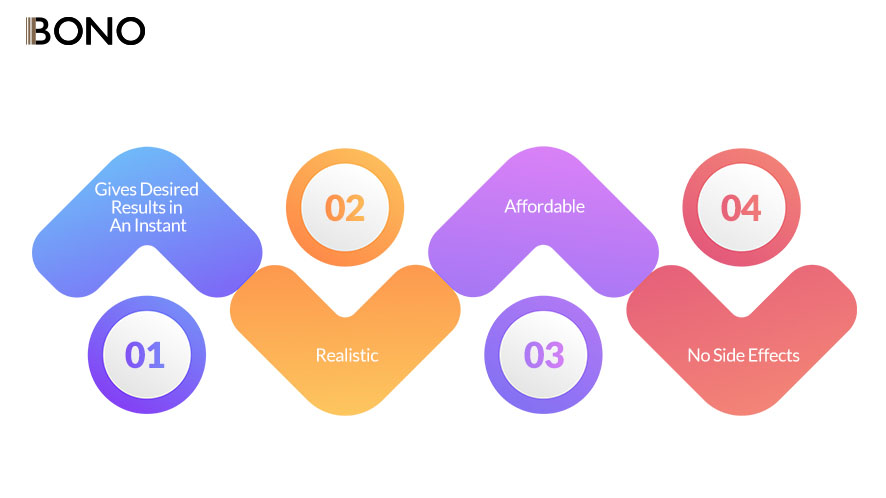
Gives Desired Results in An Instant:
When a person has their hair system in their hand, they are just one step of wearing it to have desired results in an instant in a matter of minutes. That’s why it is completely trustable to opt for a hair system male and female pattern baldness/hair loss.
Realistic:
Hair systems made with high-tech are highly convincing. It set a new, realistic, and natural shape hairline. Therefore, one cannot notice that someone is wearing a hair system. Also, the hair color and texture perfectly match a person’s natural hair.
Affordable:
In comparison to hair transplants, hair systems are very affordable and available in the design a person wants. But a person should not fall for cheap hair systems, they can be unnatural and less durable. To make your investment beneficial, we, the Bono Hair, are here. To see a variety of durable hair systems, click here.
No Side Effects:
There will be no side effects after applying the hair system like bleeding, swelling, etc., that happens after hair transplant. But consider that the hair system you are getting, and the toupee tape and adhesive glue are of high quality and made of hygiene standards.
The Down points of Non-surgical Hair Replacement System:
These down points can be controlled by purchasing a hair system that is high-grade and constructed by well-versed staff, like Bono Hair.
Maintenance:
Even if you purchase a high-quality hair system, its maintenance is as necessary as a person’s natural hair. Maintenance keeps this best hair loss treatment for males and females at the best possible high quality.
Needs Replacement:
There is a different life span for different sorts of non-surgical hair replacement. However, traditionally a hair system lasts 3 months with constant wear. So, one must consider this before buying a hair system.
Can Be of Low Quality:
According to the American Hair Loss Association, more than 70% of consumers are unhappy with the quality of non-surgical hair replacement systems. So, instead of cheap ones, buy the toupee or topper for males and females as a hair loss treatment at an economical price that is high-grade.
Best Hair Loss Treatment
When comparing topical, medication, surgical ways to non-surgical hair replacement, non-surgical (hair systems) are best. All other options than the hair system require patience for months just to see a bit better difference than before. Sometimes their patience for seeing hair on the scalp turns into disappointment because these treatments can cause some adverse side effects or hair loss other than encouraging hair growth. This leads to the conclusion that non-surgical hair replacement is the best hair loss treatment. So, let’s look in-depth at hair systems.
Stock Hair System:
Stock hair systems are the ones already created (ready-made) and stored by the factory and supplied to the hair salon. These are usually created on standard/average size.
Custom Hair System:
Custom hair systems are the ones created upon request. Other than exact head size and custom hair system contains exact hair color, hair waviness, and texture.
Best Hair Loss Treatment for Male -Toupee
What Is Toupee?
Traditionally, a toupee is a hairpiece that covers the area from the front hairline to the crown or more. It needs to be taped down or glued down. So, men need to shave the head area where the hair system will be applied.
Types Of Toupees:
There are three types of hair systems or toupees: lace, skin, and monofilament.
- Lace Base:
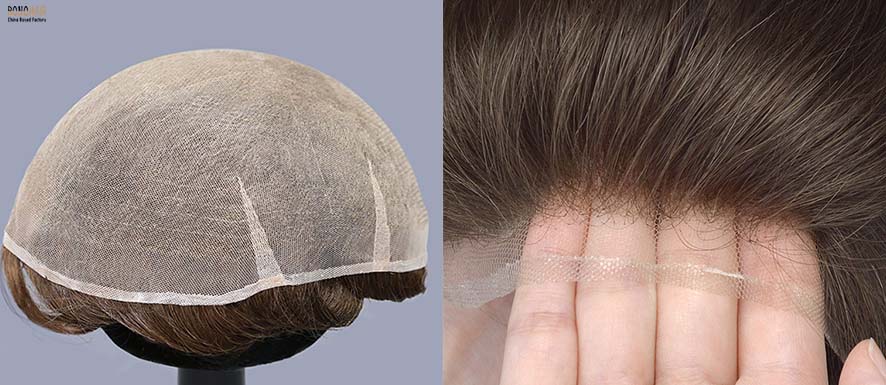
The lace hair system contains soft and thin mesh material that is fine enough to melt in the skin. These systems can only be made of only lace or a combination of other materials (polyurethane or monofilament) at the front or top of the head.
- Skin Base (polyurethane):
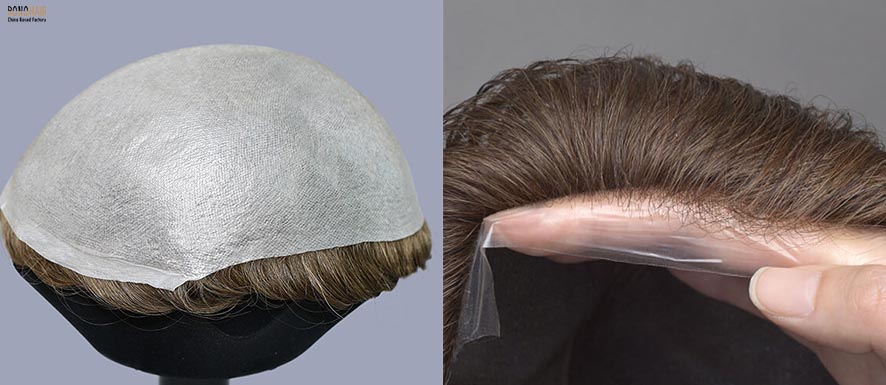
Skin hair system micro base layer hair system made of polyurethane that can have a base as thin as 0.03mm and thick like 0.08mm. We strictly control quality measures to keep it realistic, comfortable, and long-lasting. It is the finest hair system present in the market.
- Monofilament Base:
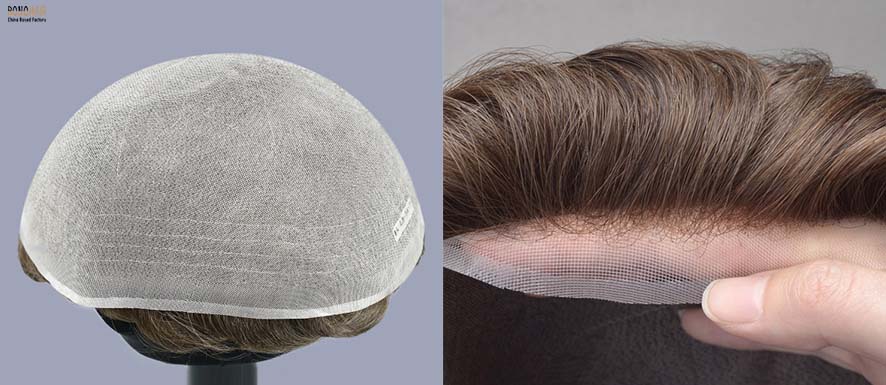
The mono hair system’s base is similar to the lace toupee, but the holes or honeycomb texture is smaller in it. Mono toupee can withstand heavier hair density. Traditionally its base can be made in combination with skin (poly).
To get more details on each type of toupee and purchase them, please click here.
Best Hair Loss Treatment for Female -Hair Topper for Thinning Crown
What Is Topper?
Hair topper for thinning crown, also known as half wig and top piece that usually covers that top part (front hairline to the crown or little down). It means that its size is different depending on the coverage one needs to disguise hair loss. The hair topper is similar to the wig, only smaller in size.
Types Of Toppers:
Mainly there are 4 types of toppers for the thinning crown as the best hair loss treatment for females including a base material and cap design.
- Clip:
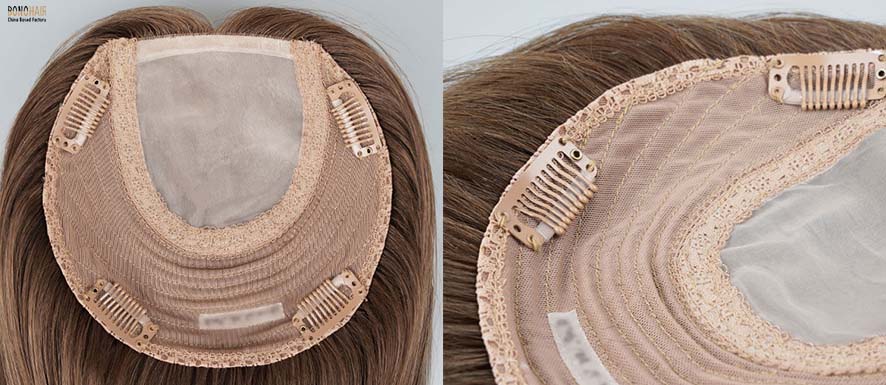
With any specific kind of base material or the combination of two base materials, hair topper with pressure-sensitive clips all over the perimeter of the circular base or on an elongated base. One can wear it by just snapping the clips in existing hair. No need to use glue, tape, or shave the hair like men’s toupee. All Female toppers for thinner crowns have pressure-sensitive clips to install.
- Polyurethane:
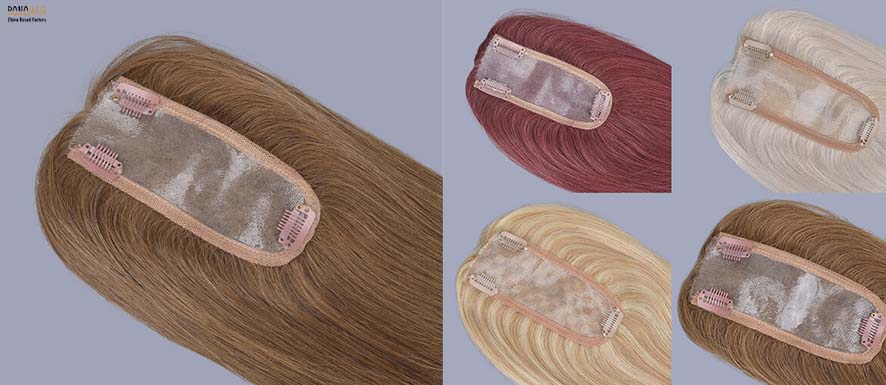
Polyurethane topper bases are very see-through where the partition was created, making it best for those who have hair thinning or beginning or middle stage of hair loss.
Polyurethane is also used around the perimeter of different base materials to ensure the seamless blend of the topper in hair and better durability of the whole topper.
- Mono Top:
Monofilament in the topper base to make the hair parting natural looking. Like other designs, mono toppers are also undetectable, durable, and breathable.
- Silk Base:
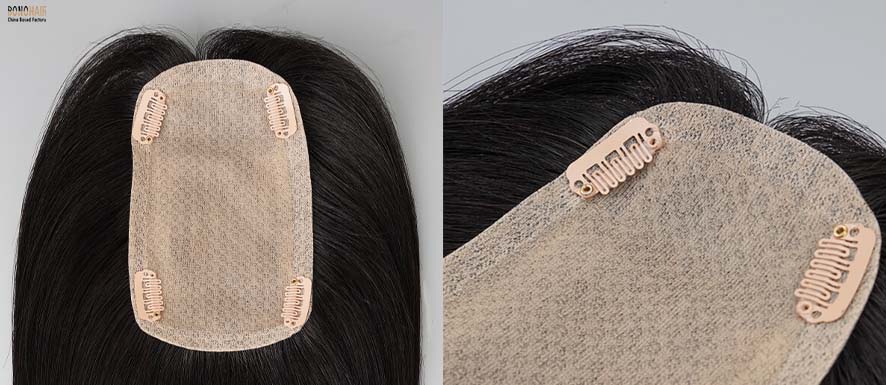
A silk base topper for thinning the crown for females provides a fantastic top appearance. Women can part the hair anywhere while giving the illusion that hair is growing out of the scalp. It is best for those experiencing light or severe degree of hair loss.
To get details of each topper type or one topper containing various base materials, please click here.
How To Choose Toupee or Topper?
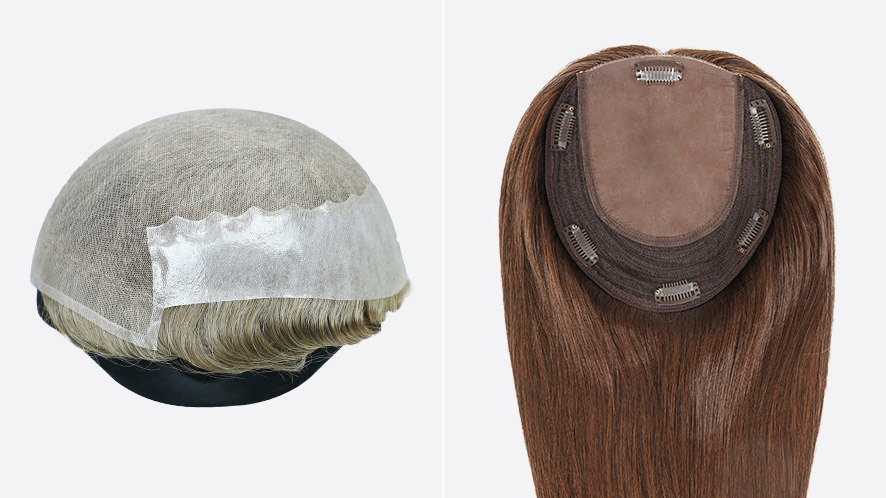
There are various factors one should consider for buying a toupee or topper for male and female pattern baldness/hair loss as the best treatment. Let’s check them out.
Base Material:
Among the different base materials i.e., monofilament (or simply ‘mono’), silk base, polyurethane (PU), lace front integration, etc., one can select depending on what’s special in each material. The knots in the silk base hair system are concealed between layers so it’s used on partitions making it appear that hair is growing out of the scalp. Mono toupee and topper offer durability as well as softness and realism. If someone’s hairline is thinning, then lace hair systems are best. The PU hair systems are best to adhere to the head. In integration base toppers, hair is pulled out through the holes for a secure, seamless, and natural-looking blend.
Base Size:
In toupee, usually, the base size covers the area from the front hairline to the crown or a little down to at the head back (in custom toupee). In the topper, one should select the base size depending on the situation of the partial hair loss. If hair loss is at the partition line, 2×4’’ inches custom hair toppers are best. If hair loss has reached an advanced stage, then 4×6’’ or 6×10’’ toppers are best depending on the severity of hair loss.
Hair Length:
There is no hard and fast rule of selecting the toupee or topper with a specific hair length. It’s about choosing the one that suits you best. But our suggestion to choose the hair length is what your natural hair has.
Hair Color:
Even if you have the right hair length, base size, and base material, and if you don’t have the right hair color for it, it will not feel natural and does not provide a seamless blend. So, it is crucial and difficult to have the exact hair color. If hair color does not match the wearer’s hair, we suggest you order a custom hair system.
Where Can You Get the Best Hair Loss Treatment for Men and Women?
One can only enjoy the benefits of wearing a toupee or topper if it is of high quality. That’s why we, the Bono Hair, are here. We help small businesses wanting to grow and make their brand labeled as providing top-grade products. We manufacture all types of toupees and toppers ensure their quality and deliver them on time. Our factory is in Qingdao, China. For over ten years, we have been supplying long-lasting and natural-looking human hair toupees and toppers worldwide especially in North and South America, Europe, Australia, and the Middle East. Many businesses grew, still working with us, and keep growing, see some client stories.
If you have any questions or want to learn more about us, please contact us via phone: +8617561788081 or email: [email protected]. We will quickly and efficiently respond with professional guidance and insights to your message.
Conclusion
Hair loss is extremely common nowadays. In men and women, it can start as soon as one reaches the age of puberty. Therefore, everyone should know what it is, the types of hair loss, reasons for it, hair loss treatments and treat and disguise it. In all treatments, surgical and non-surgical hair loss treatments are also included.
Hair loss is generally referred to as alopecia. It starts when any disorder disturbs the body’s cycle of hair production. It has different phases: anagen, catagen, telogen and exogen. In anagen, hair actively grows by dividing the hair bulb rapidly. Catagen is the transactional phase and begins when the anagen phase ends. In this phase, hair follicles shrink, and hair growth slows. Hair detaches from the bottom of hair follicles but remains in its place. Telogen is the resting phase, hair stops growing but usually doesn’t fall out. Also, it is the phase where it starts producing new hair in the place of hair that leaves its place in the catagen phase. Exogen is the shedding phase, if someone’s hair does not fall out in the Telogen phase, in this phase, via brushing and washing, hair will fall out.
Types of hair loss are many, but the common ones are androgenetic alopecia, male pattern baldness, female pattern hair loss, telogen effluvium, anagen effluvium.
Androgenetic alopecia is the most common type of hereditary hair loss and male and female pattern hair loss comes under it. Male pattern baldness starts at the temple and continues to spread on the top and perimeter of the head. While female pattern hair loss does not affect specific areas it starts dramatically or abruptly all over the head. Another type of hair loss type is telogen effluvium, which starts when a large number of hair follicles enter the resting phase. Another hair loss type is anagen effluvium, which happens when something shuts down the hair follicles’ production at the scalp.
The reasons for hair loss are many. Hormonal changes include pregnancy, discontinuing the use of birth control pills, and menopause. Medical conditions that can cause hair loss are thyroid, alopecia areata, diabetes, iron deficiency. Some medications that are used for cancer, high blood pressure, arthritis, depression, heart problems. Moreover, physical, or emotional shock like death in a family, extreme weight loss, a high fever can be the reason for hair loss.
Hair loss treatment for male and female pattern hair loss and baldness minoxidil, finasteride, prescription spironolactone pills, corticosteroid injections, topical anthralin, ketoconazole are used. Moreover, therapies like Platelet-Rich Plasma (PRP) therapy, light-and-laser therapy, and topical tretinoin are also considered by men and women.
Other than that, there are two most famous hair loss treatments: hair transplant and non -surgical hair loss treatment. Hair transplant requires a lot of money, and it takes a lot of time for hair growth to show up. Also, there can be the chase that hair growth will not look natural. Moreover, all other treatments do not guarantee the results a person wants, and it takes at least 6 months to see a difference.
Therefore, at this time to cope with hair loss, non-surgical hair replacement i.e., toupee and toppers are best. They are affordable, give the exact and instant results needed, and have no side effects. There are various types of toupees and toppers, one can select any of their client demands or what is suitable for them. But only having a top-quality one can benefit a person in a true sense.
That’s why, we, the Bono Hair, manufacture the non-surgical hair replacement (hair systems/toupee/topper) to avoid inferior and inconsistent quality and be a reliable human hairpiece manufacturer and supplier. Like numerous other businesses, if you want to grow, you can reach us by phone: +8617561788081 or email: [email protected] for professional advice and high-grade products.









